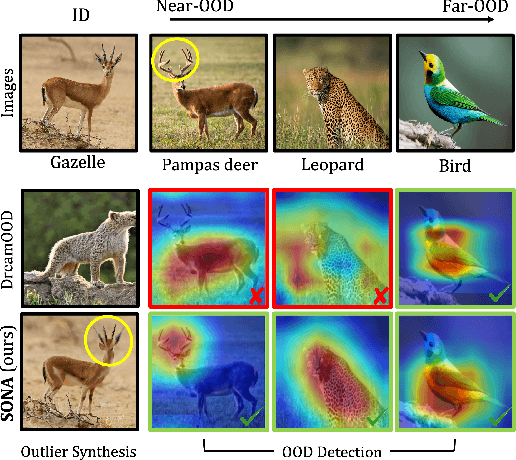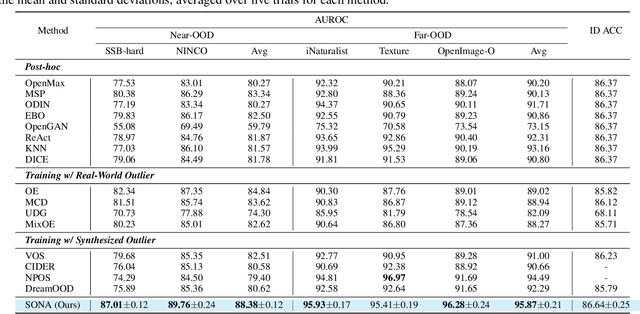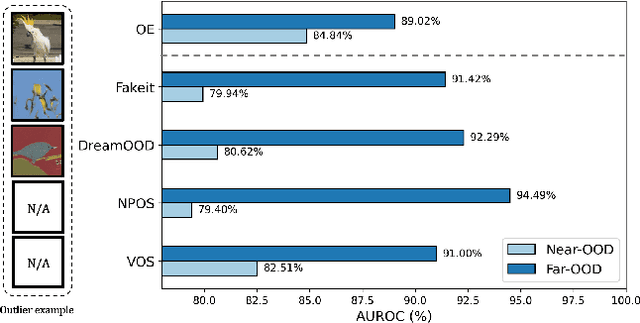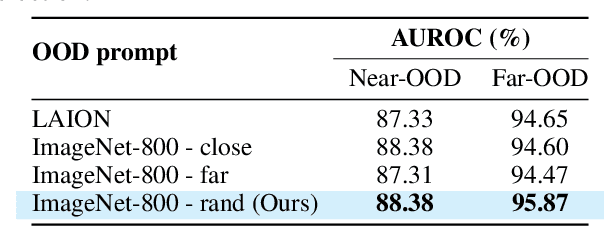Woohyung Lim
Data Intelligence Laboratory, LG AI Research
ReTabAD: A Benchmark for Restoring Semantic Context in Tabular Anomaly Detection
Oct 02, 2025Abstract:In tabular anomaly detection (AD), textual semantics often carry critical signals, as the definition of an anomaly is closely tied to domain-specific context. However, existing benchmarks provide only raw data points without semantic context, overlooking rich textual metadata such as feature descriptions and domain knowledge that experts rely on in practice. This limitation restricts research flexibility and prevents models from fully leveraging domain knowledge for detection. ReTabAD addresses this gap by restoring textual semantics to enable context-aware tabular AD research. We provide (1) 20 carefully curated tabular datasets enriched with structured textual metadata, together with implementations of state-of-the-art AD algorithms including classical, deep learning, and LLM-based approaches, and (2) a zero-shot LLM framework that leverages semantic context without task-specific training, establishing a strong baseline for future research. Furthermore, this work provides insights into the role and utility of textual metadata in AD through experiments and analysis. Results show that semantic context improves detection performance and enhances interpretability by supporting domain-aware reasoning. These findings establish ReTabAD as a benchmark for systematic exploration of context-aware AD.
THEME : Enhancing Thematic Investing with Semantic Stock Representations and Temporal Dynamics
Aug 23, 2025Abstract:Thematic investing aims to construct portfolios aligned with structural trends, yet selecting relevant stocks remains challenging due to overlapping sector boundaries and evolving market dynamics. To address this challenge, we construct the Thematic Representation Set (TRS), an extended dataset that begins with real-world thematic ETFs and expands upon them by incorporating industry classifications and financial news to overcome their coverage limitations. The final dataset contains both the explicit mapping of themes to their constituent stocks and the rich textual profiles for each. Building on this dataset, we introduce \textsc{THEME}, a hierarchical contrastive learning framework. By representing the textual profiles of themes and stocks as embeddings, \textsc{THEME} first leverages their hierarchical relationship to achieve semantic alignment. Subsequently, it refines these semantic embeddings through a temporal refinement stage that incorporates individual stock returns. The final stock representations are designed for effective retrieval of thematically aligned assets with strong return potential. Empirical results show that \textsc{THEME} outperforms strong baselines across multiple retrieval metrics and significantly improves performance in portfolio construction. By jointly modeling thematic relationships from text and market dynamics from returns, \textsc{THEME} provides a scalable and adaptive solution for navigating complex investment themes.
MultiTab: A Comprehensive Benchmark Suite for Multi-Dimensional Evaluation in Tabular Domains
May 20, 2025Abstract:Despite the widespread use of tabular data in real-world applications, most benchmarks rely on average-case metrics, which fail to reveal how model behavior varies across diverse data regimes. To address this, we propose MultiTab, a benchmark suite and evaluation framework for multi-dimensional, data-aware analysis of tabular learning algorithms. Rather than comparing models only in aggregate, MultiTab categorizes 196 publicly available datasets along key data characteristics, including sample size, label imbalance, and feature interaction, and evaluates 13 representative models spanning a range of inductive biases. Our analysis shows that model performance is highly sensitive to such regimes: for example, models using sample-level similarity excel on datasets with large sample sizes or high inter-feature correlation, while models encoding inter-feature dependencies perform best with weakly correlated features. These findings reveal that inductive biases do not always behave as intended, and that regime-aware evaluation is essential for understanding and improving model behavior. MultiTab enables more principled model design and offers practical guidance for selecting models tailored to specific data characteristics. All datasets, code, and optimization logs are publicly available at https://huggingface.co/datasets/LGAI-DILab/Multitab.
MolMole: Molecule Mining from Scientific Literature
May 08, 2025Abstract:The extraction of molecular structures and reaction data from scientific documents is challenging due to their varied, unstructured chemical formats and complex document layouts. To address this, we introduce MolMole, a vision-based deep learning framework that unifies molecule detection, reaction diagram parsing, and optical chemical structure recognition (OCSR) into a single pipeline for automating the extraction of chemical data directly from page-level documents. Recognizing the lack of a standard page-level benchmark and evaluation metric, we also present a testset of 550 pages annotated with molecule bounding boxes, reaction labels, and MOLfiles, along with a novel evaluation metric. Experimental results demonstrate that MolMole outperforms existing toolkits on both our benchmark and public datasets. The benchmark testset will be publicly available, and the MolMole toolkit will be accessible soon through an interactive demo on the LG AI Research website. For commercial inquiries, please contact us at \href{mailto:contact_ddu@lgresearch.ai}{contact\_ddu@lgresearch.ai}.
ImagePiece: Content-aware Re-tokenization for Efficient Image Recognition
Dec 21, 2024



Abstract:Vision Transformers (ViTs) have achieved remarkable success in various computer vision tasks. However, ViTs have a huge computational cost due to their inherent reliance on multi-head self-attention (MHSA), prompting efforts to accelerate ViTs for practical applications. To this end, recent works aim to reduce the number of tokens, mainly focusing on how to effectively prune or merge them. Nevertheless, since ViT tokens are generated from non-overlapping grid patches, they usually do not convey sufficient semantics, making it incompatible with efficient ViTs. To address this, we propose ImagePiece, a novel re-tokenization strategy for Vision Transformers. Following the MaxMatch strategy of NLP tokenization, ImagePiece groups semantically insufficient yet locally coherent tokens until they convey meaning. This simple retokenization is highly compatible with previous token reduction methods, being able to drastically narrow down relevant tokens, enhancing the inference speed of DeiT-S by 54% (nearly 1.5$\times$ faster) while achieving a 0.39% improvement in ImageNet classification accuracy. For hyper-speed inference scenarios (with 251% acceleration), our approach surpasses other baselines by an accuracy over 8%.
EXAONE 3.5: Series of Large Language Models for Real-world Use Cases
Dec 09, 2024



Abstract:This technical report introduces the EXAONE 3.5 instruction-tuned language models, developed and released by LG AI Research. The EXAONE 3.5 language models are offered in three configurations: 32B, 7.8B, and 2.4B. These models feature several standout capabilities: 1) exceptional instruction following capabilities in real-world scenarios, achieving the highest scores across seven benchmarks, 2) outstanding long-context comprehension, attaining the top performance in four benchmarks, and 3) competitive results compared to state-of-the-art open models of similar sizes across nine general benchmarks. The EXAONE 3.5 language models are open to anyone for research purposes and can be downloaded from https://huggingface.co/LGAI-EXAONE. For commercial use, please reach out to the official contact point of LG AI Research: contact_us@lgresearch.ai.
Diffusion based Semantic Outlier Generation via Nuisance Awareness for Out-of-Distribution Detection
Aug 27, 2024



Abstract:Out-of-distribution (OOD) detection, which determines whether a given sample is part of the in-distribution (ID), has recently shown promising results through training with synthetic OOD datasets. Nonetheless, existing methods often produce outliers that are considerably distant from the ID, showing limited efficacy for capturing subtle distinctions between ID and OOD. To address these issues, we propose a novel framework, Semantic Outlier generation via Nuisance Awareness (SONA), which notably produces challenging outliers by directly leveraging pixel-space ID samples through diffusion models. Our approach incorporates SONA guidance, providing separate control over semantic and nuisance regions of ID samples. Thereby, the generated outliers achieve two crucial properties: (i) they present explicit semantic-discrepant information, while (ii) maintaining various levels of nuisance resemblance with ID. Furthermore, the improved OOD detector training with SONA outliers facilitates learning with a focus on semantic distinctions. Extensive experiments demonstrate the effectiveness of our framework, achieving an impressive AUROC of 88% on near-OOD datasets, which surpasses the performance of baseline methods by a significant margin of approximately 6%.
EXAONE 3.0 7.8B Instruction Tuned Language Model
Aug 07, 2024



Abstract:We introduce EXAONE 3.0 instruction-tuned language model, the first open model in the family of Large Language Models (LLMs) developed by LG AI Research. Among different model sizes, we publicly release the 7.8B instruction-tuned model to promote open research and innovations. Through extensive evaluations across a wide range of public and in-house benchmarks, EXAONE 3.0 demonstrates highly competitive real-world performance with instruction-following capability against other state-of-the-art open models of similar size. Our comparative analysis shows that EXAONE 3.0 excels particularly in Korean, while achieving compelling performance across general tasks and complex reasoning. With its strong real-world effectiveness and bilingual proficiency, we hope that EXAONE keeps contributing to advancements in Expert AI. Our EXAONE 3.0 instruction-tuned model is available at https://huggingface.co/LGAI-EXAONE/EXAONE-3.0-7.8B-Instruct
Binning as a Pretext Task: Improving Self-Supervised Learning in Tabular Domains
May 14, 2024Abstract:The ability of deep networks to learn superior representations hinges on leveraging the proper inductive biases, considering the inherent properties of datasets. In tabular domains, it is critical to effectively handle heterogeneous features (both categorical and numerical) in a unified manner and to grasp irregular functions like piecewise constant functions. To address the challenges in the self-supervised learning framework, we propose a novel pretext task based on the classical binning method. The idea is straightforward: reconstructing the bin indices (either orders or classes) rather than the original values. This pretext task provides the encoder with an inductive bias to capture the irregular dependencies, mapping from continuous inputs to discretized bins, and mitigates the feature heterogeneity by setting all features to have category-type targets. Our empirical investigations ascertain several advantages of binning: capturing the irregular function, compatibility with encoder architecture and additional modifications, standardizing all features into equal sets, grouping similar values within a feature, and providing ordering information. Comprehensive evaluations across diverse tabular datasets corroborate that our method consistently improves tabular representation learning performance for a wide range of downstream tasks. The codes are available in https://github.com/kyungeun-lee/tabularbinning.
Can We Utilize Pre-trained Language Models within Causal Discovery Algorithms?
Nov 19, 2023Abstract:Scaling laws have allowed Pre-trained Language Models (PLMs) into the field of causal reasoning. Causal reasoning of PLM relies solely on text-based descriptions, in contrast to causal discovery which aims to determine the causal relationships between variables utilizing data. Recently, there has been current research regarding a method that mimics causal discovery by aggregating the outcomes of repetitive causal reasoning, achieved through specifically designed prompts. It highlights the usefulness of PLMs in discovering cause and effect, which is often limited by a lack of data, especially when dealing with multiple variables. Conversely, the characteristics of PLMs which are that PLMs do not analyze data and they are highly dependent on prompt design leads to a crucial limitation for directly using PLMs in causal discovery. Accordingly, PLM-based causal reasoning deeply depends on the prompt design and carries out the risk of overconfidence and false predictions in determining causal relationships. In this paper, we empirically demonstrate the aforementioned limitations of PLM-based causal reasoning through experiments on physics-inspired synthetic data. Then, we propose a new framework that integrates prior knowledge obtained from PLM with a causal discovery algorithm. This is accomplished by initializing an adjacency matrix for causal discovery and incorporating regularization using prior knowledge. Our proposed framework not only demonstrates improved performance through the integration of PLM and causal discovery but also suggests how to leverage PLM-extracted prior knowledge with existing causal discovery algorithms.
 Add to Chrome
Add to Chrome Add to Firefox
Add to Firefox Add to Edge
Add to Edge